Motorcycle Investor mag
Yamaha YZF1000 R1 – future collectible
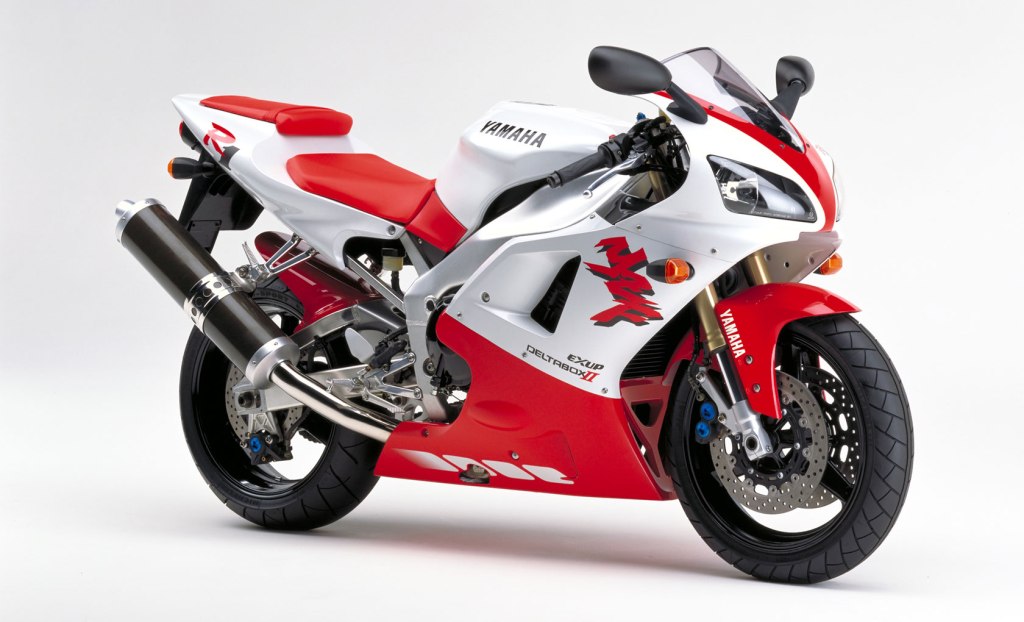
Generation One
(by Guy 'Guido' Allen, June 2019, updated June 2025)
Is it too soon to be eyeing off nineties collectibles? Not if it’s an early R1
It was a few years ago now, when a Motorcycle Trader reader and I were standing back a little from the noise of the wonderful Broadford Bonanza, talking about collecting bikes. We agreed that some desirable models out there were just getting too expensive, even stuff from the seventies that was almost free a couple of decades ago.
“I’ve started putting away stuff from the nineties,” he
announced, “just bought a first model R1 the other day.”
It was then I confessed to having just bought a Ducati 916
– another hero bike from the era.
Hero or not, doesn’t it seem a little hasty rating
collectibles from the mid-nineties? Err, no. Here’s what
UK Motor Cycle News had to say about the R1:
“The third and final great sports bike of the nineties.
The FireBlade set the agenda, the 916 added finesse and
the Yamaha YZF-R1 (1998) topped them off with extra power
and madness. Even today the original Yamaha YZF-R1 is a
sports tool to be reckoned with.”
I must confess to keeping half an eye out for an R1
myself, since the other two were already in the shed.
This kinda begs the question of what makes a collectible.
The basics are a premium model, preferably with some race
success. Rarity on its own doesn’t make the grade, though
it helps, as does popularity. If it can be seen as a
design that influenced others, and happens to be a first
edition of a long-lasting series, so much the better.
Of course this is anything but a science. Tastes change
over time and it takes a very long while for a model to
establish gold-standard collectability, which is when the
prices may stop climbing but rarely if ever go down. The
R1 is nowhere near that stage – we’re talking the likes of
a Vincent Rapide for that status.
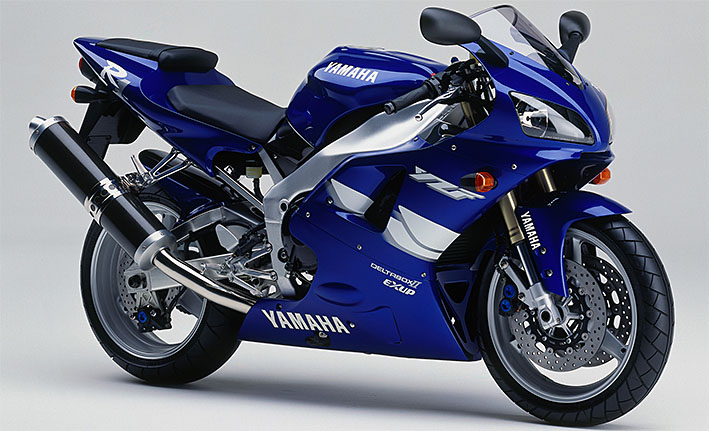
1999 variant – note the Yamaha logo on the bellypan,
rather than the speedblocks on the 1998 red example at
top.
Let’s take a gander at what makes an R1. About the time
its predecessor the Thunderace (essentially a final model
FZR1000) was being launched, work had begun on sketching
out Yamaha’s next-generation track weapon. While the
Thunderace was and remains a great ride, it somehow didn’t
quite cut it against the smaller and more sports-focussed
competitors.
Enter Kunihiko Miwa, the young lead designer on the R1
project. Now a very senior exec with the company, he is
said to have laid down the basic goal posts for the R1:
150hp, under 180kg dry weight and 600-class handling.
The fact is, they pretty well hit the nail on the head.
The bike produced within a whisker of 150 horses at the
crank, claimed a 177 kilo dry weight (closer to 200 wet)
and ran an incredibly short wheelbase for the class at
1385mm, compared to 1405 for a first-model FireBlade and
1410 for Ducati 916.
To achieve that, the powerplant in particular featured a
number of weight and size reduction features. Iron liners
for the cylinders were ditched, instead gaining ceramic
coating in a design where the cylinders and upper
crankcase were cast as one piece. This and a host of other
refinements claimed a 10 kilo reduction in the weight of
the power unit.
Size was also a focus, and Yamaha developed what came to
be referred to as a stacked gearbox, where the input and
output shafts were located vertically instead of
horizontally in relation to each other. It may not sound
like much, but again the company managed to pull the
numbers back, in this case reducing the length of the
powerplant by 81mm. That in turn gave the designers the
freedom to locate the mass a little further forward and
design a longer swingarm. The advantage of the latter was
said to be improved traction.
Surprisingly, Yamaha wasn’t quite ready to stick its neck
out with fuel injection on this one – that had to wait
until the third series in 2002.
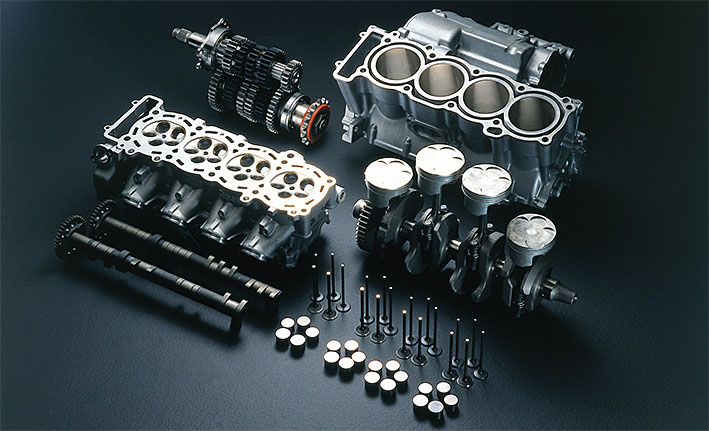
There’s no doubt the R1 was a significant step forward for
sports bikes at the time. I recall their launch and rode
several examples in a short space of time. They felt
little, steered quickly, with decent suspension and
particularly good brakes. Those monoblocs up front were
the pick of what was available at the time.
All up, R1s were fast, and very capable. Over time they
copped criticism on two fronts: comfort and being light in
the front end.
Some complained the R1 understeered, which was
questionable. I think you could very easily get in over
your proverbial head in a corner, and that’s when people
freaked out and ran wide. Get over the front end and keep
your nerve and they were fine.
They could get light up front when you got into them with
the throttle and Yamaha did tweak the geometry for a
little more weight over the front wheel in the second
series (2000). That model also had some bodywork changes
for more comfortable seating and a touch more wind
protection.
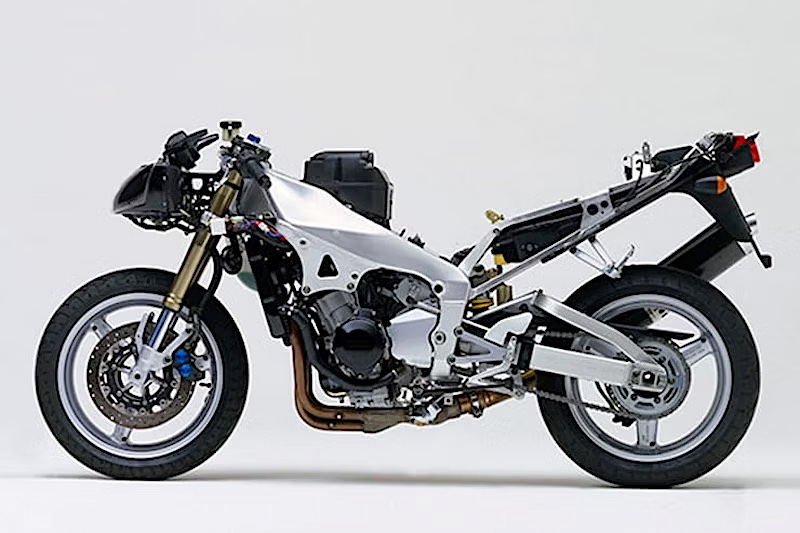
Don Stafford of Stafford Motorcycles in Melbourne used to
retail Yamaha and remembers the first R1 very fondly. “I
think they were fantastic,” he says, “When it came to a
race or sports bike you probably couldn’t do better. They
were bulletproof – a bloody good motor.” He added the
wheelie hounds would sometimes chew out second gear but
that was it for dramas.
A wealth of aftermarket gear – including race kits – was
available for these things. And that is where your problem
will be when it comes to picking up a potential
collectible. The market values originality and finding an
unmolested R1 will be a real challenge.
When it comes to buying, some evidence of regular
servicing (these engines are super strong) and a
moderately quiet motor will suffice. Wheelie-induced gear
issues will become apparent when the bike is under load –
if it drops out of second for no reason, it needs work. A
general check, particularly of the steering head bearings,
may also reveal signs of rough handling. These days, I
reckon the owner’s Facebook page could be even more
revealing!
If the seller comes across as halfway sane and the bike
has its factory gear, you’re well on the way. As always,
it’s worth paying a premium for a good original, as it’s
nearly always much, much, cheaper than a restoration.
Prices? The big issue at the moment is finding a first model. It seems they either went to the wrecker, having been put up a tree, or are being hoarded. If you find a clean and healthy original example for anywhere around the Au$10k mark, buy it.
There’s no guarantee first model R1s will go up in value,
but it’s a fair bet they eventually will (and I suspect
already are). In any case you’re not gambling millions and
will have a motorcycle that is still a thoroughly
entertaining ride.
***
Postscript June 2025: We first heard of people quietly
putting these away nearly a decade ago and collectors
have been actively looking for them in more recent
times. This has inevitably led to rising prices for a
good one.
At the moment expect to pay very low to mid-teens
(Au$) for a tidy 1999 R1 with factory muffler and
perhaps as much as Au$20,000 (US$15,000, GB£11,000) for
an exceptional 1998 example in showroom condition and
with ultra-low miles and all the sales documents.
Back in 2023, Bring a Trailer auctioned a tidy 1999 machine with 5800km (3600 miles) on the odometer. It sold for Au$15,000 (US$10,000, GB£7300).
***
See our Bikesales story on buying 1990s classics
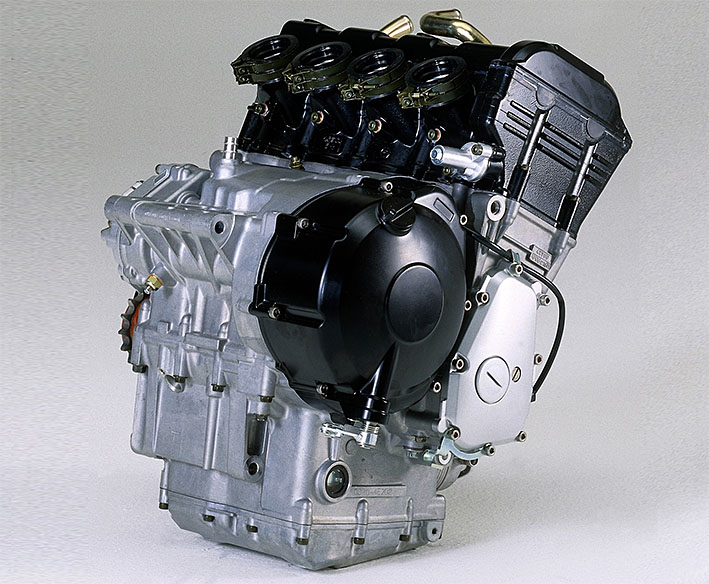
SPECS:
Yamaha YZF 1000 R1 1998-2000
ENGINE:
TYPE: Liquid-cooled, four-valves-per-cylinder, inline four
CAPACITY: 998cc
BORE & STROKE: 74 x 58mm
COMPRESSION RATIO: 11.8:1
FUEL SYSTEM: 4 x 40mm Mikuni downdraft carburettors
TRANSMISSION:
TYPE: Six-speed, constant-mesh,
FINAL DRIVE: chain
CHASSIS & RUNNING GEAR:
FRAME TYPE: twin spar alloy
FRONT SUSPENSION: 41mm inverted forks, 135mm travel
REAR SUSPENSION: alloy swingarm, monoshock with 130mm
travel
FRONT BRAKE: 2 x 298 discs with four-piston monobloc
calipers
REAR BRAKE: 256mm disc with 2-piston caliper
DIMENSIONS & CAPACITIES:
DRY/WET WEIGHT: 177/205KG
SEAT HEIGHT: 813mm
WHEELBASE: 1395mm
FUEL CAPACITY: 18L
WHEELS & TYRES:
FRONT: 3.50-17 CAST ALLOY, 120/70-ZR17
REAR: 6.00-17, 190/50-ZR17
PERFORMANCE:
POWER: 110KW @10,000rpm
TORQUE: 108Nm @ 8500rpm
TOP SPEED: 275km/h
PRICE WHEN NEW: $16,990 + ORC
-------------------------------------------------
Produced by AllMoto 61 400 694 722
Privacy: we do not collect cookies or any other data.


Archives
Contact


